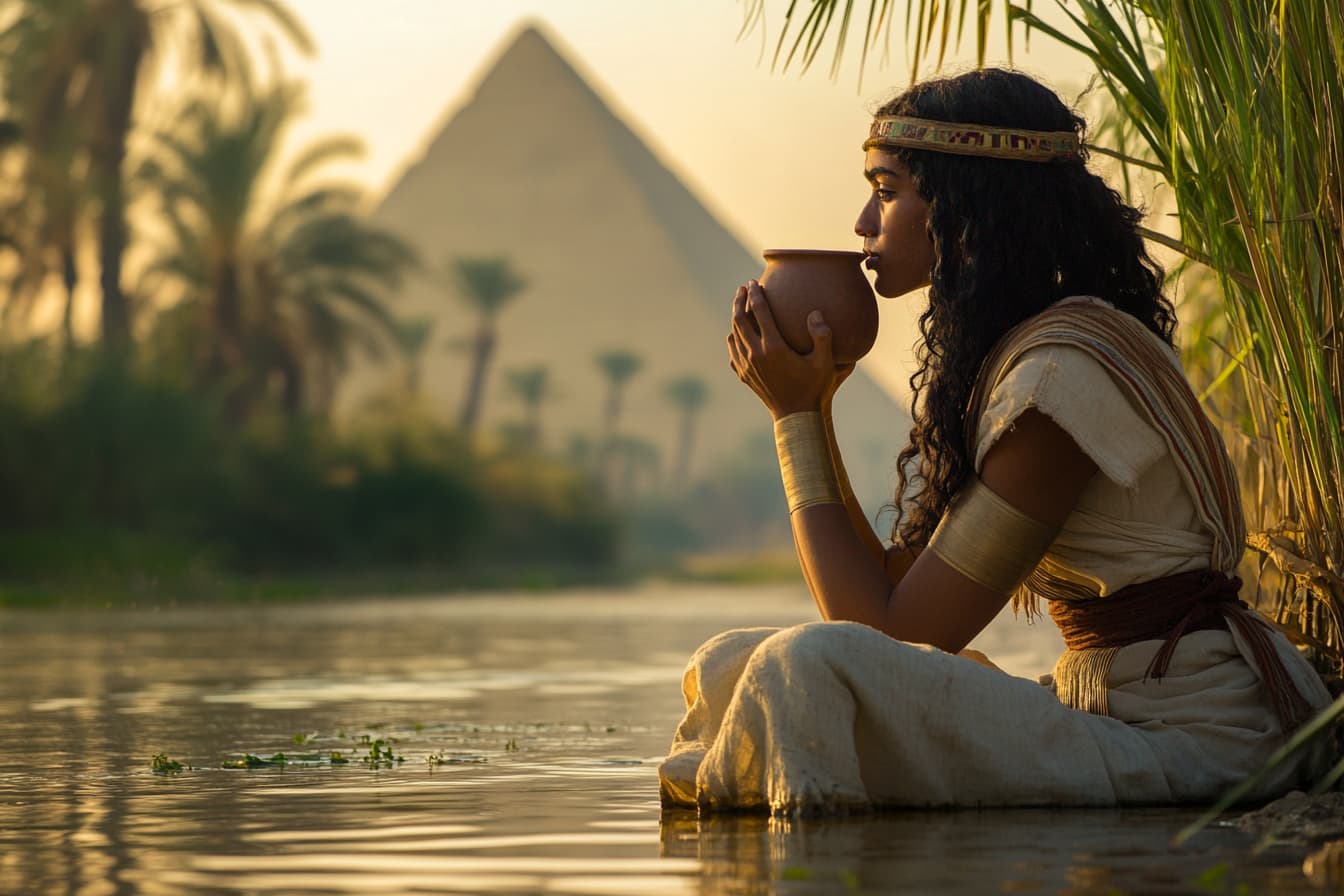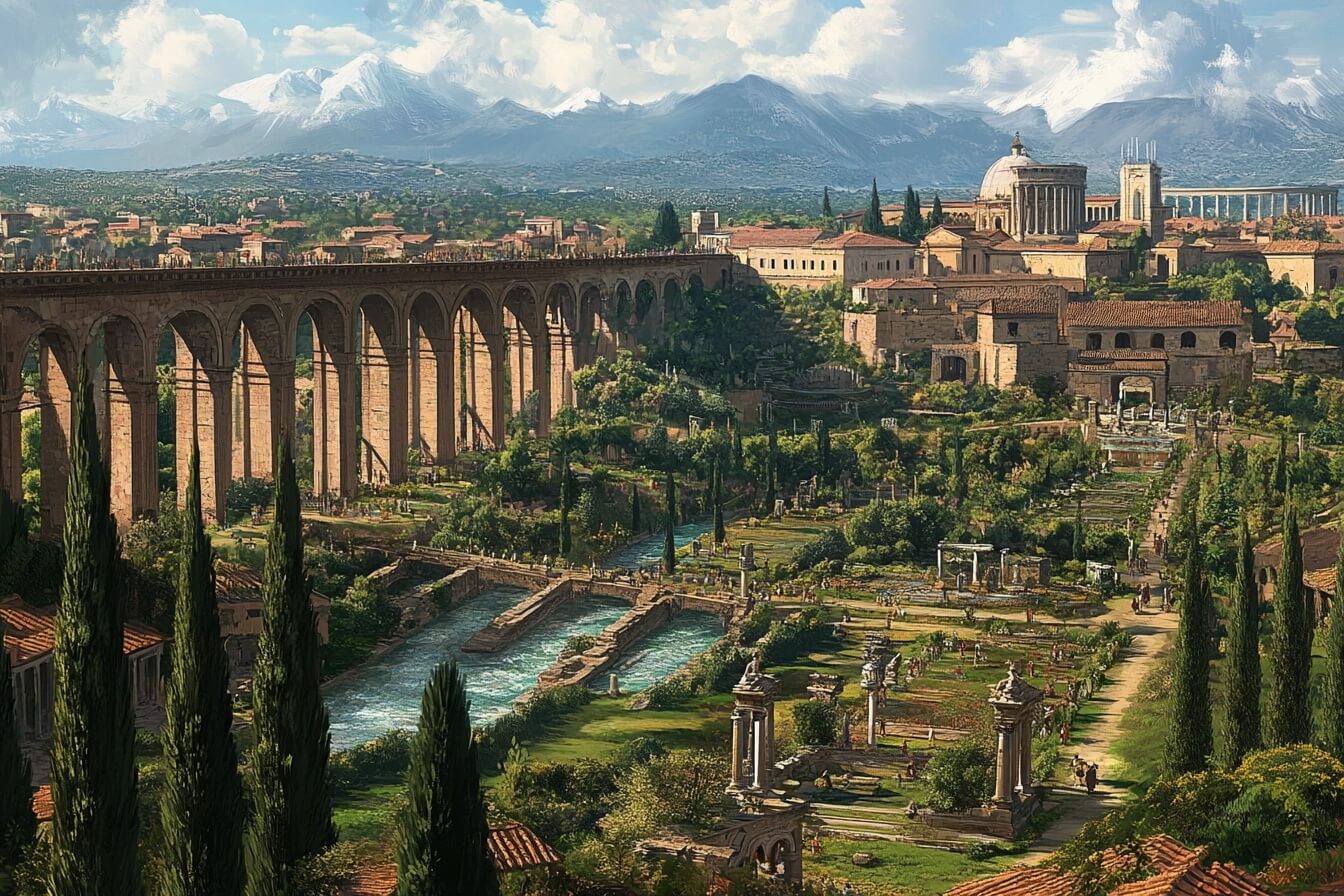- 🇩🇪 Deutsch
- 🇬🇧 English
- 🇪🇸 Español
- 🇫🇷 Français
- 🇮🇹 Italiano
- 🇵🇹 Português
- 🇨🇳 中文
50% off all Ciceru tours throughout October!Valid for the entire month of October when purchasing at least 2 tickets.
Get discount code
Water Through the Ages
The Lifeblood of Civilizations: How Access to Clean Water Shaped the World’s Greatest Societies
The Ancient Egyptians
Harnessing the Nile's Power

The Ancient Egyptians developed sophisticated irrigation systems and basins to store water, turning arid desert into fertile farmland and building a flourishing civilization along its banks.
Beyond agriculture, water held deep spiritual significance in Egyptian culture, central to religious practices and many important structures, such as the pyramids and temples, were built near its banks.
The Mesopotamians
Taming the Tigris and Euphrates

Mesopotamia created canals, levees, and dams to control unpredictable floods. Canals were essential for irrigating crops and the invention of writing and legal codes were directly tied to the ability to manage water.
Water management wasn’t just about survival. Control over water was political, with rival city-states often going to war over access to key water sources.
The Ancient Greekss
Innovators of Public Water System

Greek engineers were some of the earliest to develop public water systems, including aqueducts that brought water to their cities. Greek cities like Athens relied on these systems for public and private use.
Water was also central to Greek religious life. Sacred springs and rivers were believed to be blessed by the gods, and many temples and religious sanctuaries were built near these water sources.
The Romans
Masters of Aqueducts and Public Waterworks

Roman aqueducts were marvels of engineering, spanning miles and using precise gradients to move water solely through gravity. These aqueducts supplied millions of gallons of water every day to Roman cities.
This abundant water supply allowed Romans to build public baths, fountains, and latrines, which were central to social life and public hygiene.
Ancient China
The Grand Canal and Irrigation Systems

The construction of the Grand Canal was a pivotal development, connecting the Yellow and Yangtze rivers. Ancient dynasties also built extensive irrigation systems to manage water supply.
Water control was seen as a way to maintain harmony between heaven and earth, and emperors who could effectively manage water resources were seen as having the 'Mandate of Heaven'.
Persians
Sustaining Life in the Arid Deserts

Persians developed the qanat system, an underground network of tunnels that tapped into groundwater sources. These systems minimized water loss through evaporation and provided a reliable water source.
Persian gardens and public baths also showcased their advanced understanding of water’s importance for both practical and aesthetic purposes.
Mayans, Incas, and Aztecs
Advanced Water Systems in the New World

These civilizations developed advanced water management systems to grow crops and build cities. Mayans built reservoirs, Incas used stone aqueducts, and Aztecs constructed dikes and canals.
Their innovative techniques allowed them to thrive in diverse geographies and climatic conditions, from jungles to mountains.
🍪 We use cookies to enhance your experience on our website. Here's how:
- Essential Cookies: these are necessary for our site to function properly and are always active.
- Optional Cookies: these allow us to monitor and improve our app's performance.
For more information, visit our Cookie Policy.
